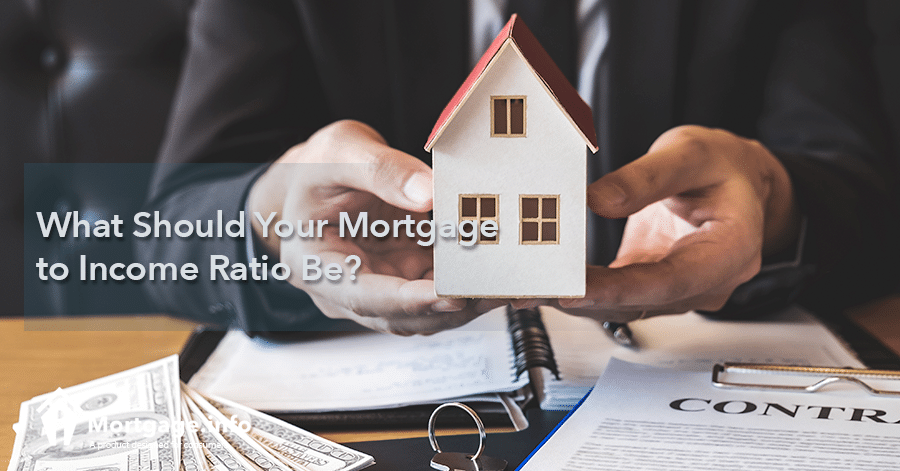When you apply for a mortgage, you have to meet the mortgage program guidelines, including the mortgage to income ratio. The debt ratio, or front-end ratio, compares your mortgage payment to your gross monthly income. It’s the percentage of your gross monthly income that your mortgage payment takes up. Each loan program has a maximum front-end ratio, but you should have your own maximum in mind as well.
Get Matched with a Lender, Click Here.
What is the Mortgage to Income Ratio?
You can calculate your mortgage to income ratio with the following calculation:
Total mortgage payment/Gross monthly income
You figure your total mortgage payment by adding up your principal, interest, monthly real estate tax payment, monthly homeowner’s insurance payment, and mortgage insurance amounts. Your gross monthly income is the amount of income you bring home each month before taxes.
The Standard Mortgage to Income Ratio Rules
All loan programs have their own maximum debt ratio allowances as follows:
- FHA – 31%
- Conventional – 28%
- USDA – 29%
The VA doesn’t have a maximum housing ratio – they focus on the total debt ratio, which compares your total monthly debts (including credit card payments, car payments, student loan payments, and installment loan payments). Any subprime loans or loans from lenders that aren’t one of the above will have their own guidelines per the lender’s discretion.
The Qualified Mortgage Debt Ratio Rules
Regardless of the loan program you choose, most lenders follow the Qualified Mortgage Debt Ratio rules. The QM rules began after the housing crisis to keep lenders more accountable and borrowers choosing smarter loans.
According to the Qualified Mortgage Guidelines, your total debt ratio cannot exceed 43%. This means all of your debts cannot take up more than 43% of your gross monthly income. Some lenders work around this rule and don’t worry about offering Qualified Mortgages, but these lenders are few and far between. Most lenders want to make sure you can afford the loan beyond a reasonable doubt in order to avoid foreclosure.
Looking at Your Mortgage to Income Ratio Logically
Above, we’ve talked about the mortgage to income ratio guidelines according to the lenders. Now it’s time to talk about the mortgage to income ratio logically. What can you afford? That’s what you need to figure out. Just because you can have a 31% housing ratio for an FHA loan, for example, doesn’t mean that you need to borrow that much. If you aren’t comfortable with a mortgage payment of that size, choose one that you are comfortable with so that you can decrease your chances of foreclosure.
We suggest that you get pre-approved for a loan amount and find out the full payment. Then compare that to your actual budget. Put the numbers in your budget and see how it works. Is it close to the amount you pay now for rent/housing? If it’s much higher, is it a number that fits within your budget? Do you have enough disposable income after paying the mortgage to cover the cost of everyday living? Consider these factors before deciding on a mortgage.
Click to See the Latest Mortgage Rates.
The True Cost of Owning a Home
Remember, you will pay more than just the mortgage payment when you own a home. You are now responsible for the maintenance and repairs on the home. On average, expect to pay 1% of your home’s value in home maintenance and repairs per year. Of course, you’ll have years that you pay more or less than this amount, but it’s a good rule of thumb.
You also have to pay utilities to keep the house running. Try to get an estimate of these costs before deciding on a home/mortgage. This way you have a true idea of what a home will cost you rather than suffering payment shock once you take the mortgage.
Do your research on the real estate taxes and homeowner’s insurance too. You can obtain both figures easily either from the seller or by calling the county and insurance agents yourself. Do the real estate taxes historically increase each year? This may affect your decision too.
Before you take on a mortgage, know all of the details. Owning a house means more than paying just the mortgage. Keeping your mortgage to income ratio low can help keep your mortgage affordable as long as possible. Use the mortgage program rules as a guide, but figure out what you can best afford in order to ensure smooth sailing moving forward.

